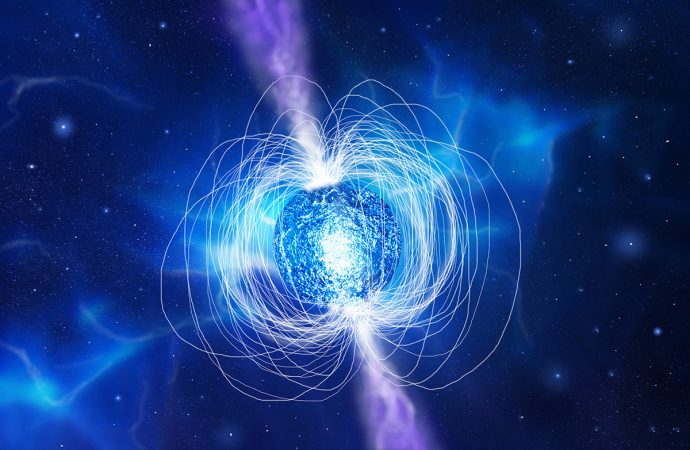Talk about rocking the cradle. Sharp new images have identified a throng of newborn stars as the source of a fast radio burst. The discovery strengthens the idea that these brief pulses of radio waves arise from newly formed neutron stars, super-dense objects just 20 kilometres across.
During the past decade, astronomers have detected about two dozen fast radio bursts from all over the sky. Each lasts just a few milliseconds, and attempts to explain them have invoked everything from supermassive black holes to little green men.
Until recently, we didn’t even know for sure whether the bursts arose in our galaxy or beyond. But in January, researchers announced a breakthrough. They found the home of a fast radio burst named FRB 121102: a small galaxy in the constellation Auriga 2.4 billion light years from Earth.
Now, Cees Bassa of the Netherlands Institute for Radio Astronomy in Dwingeloo and his colleagues have used the Hubble Space Telescope to study the galaxy.
“The Hubble observations allow us to get a very sharp image,” says team member Shriharsh Tendulkar of McGill University in Montreal, Canada. “There is a very bright spot of star formation, and this FRB lies bang inside it.”
Meanwhile, Japanese astronomers led by Mitsuru Kokubo of Tohoku University in Sendai used the 8.2-metre Subaru Telescope in Hawaii to target the galaxy. Their images rival Hubble’s because adaptive optics undid the usual blurring created by Earth’s atmosphere.
The Hubble and Subaru images show that the star-forming complex lies on the small galaxy’s outskirts. Hubble’s handiwork puts the galaxy’s visible diameter at about 20,000 light years, one-sixth that of the Milky Way. The stellar nursery is 6200 light years from the galaxy’s centre and spans 4400 light years, far larger than any known in the Milky Way.
Prolific galaxy
“It’s an extraordinary galaxy,” says Dale Frail of the National Radio Astronomy Observatory in Socorro, New Mexico. “Relative to its small size, it’s making stars at a prolific rate.”
That points to the cause of fast radio bursts. “It’s telling us that they probably occur in young neutron stars,” says Jonathan Katz of Washington University in St Louis, Missouri.
Many astronomers already favour that explanation because the short duration of the bursts suggested the source was tiny. Neutron stars fit the bill, and young, fast-spinning ones have plenty of energy to release. They form when short-lived massive stars die in their stellar nurseries.
But no one yet knows whether the same idea explains other fast radio bursts. FRB 121102 is unique: astronomers have seen it flash about 30 times but the others only once.
Katz suspects they may all have the same cause, but Frail says, “I would be reluctant to draw such broad conclusions based on a sample of one.”
Source: New Scientist

































Leave a Comment
You must be logged in to post a comment.